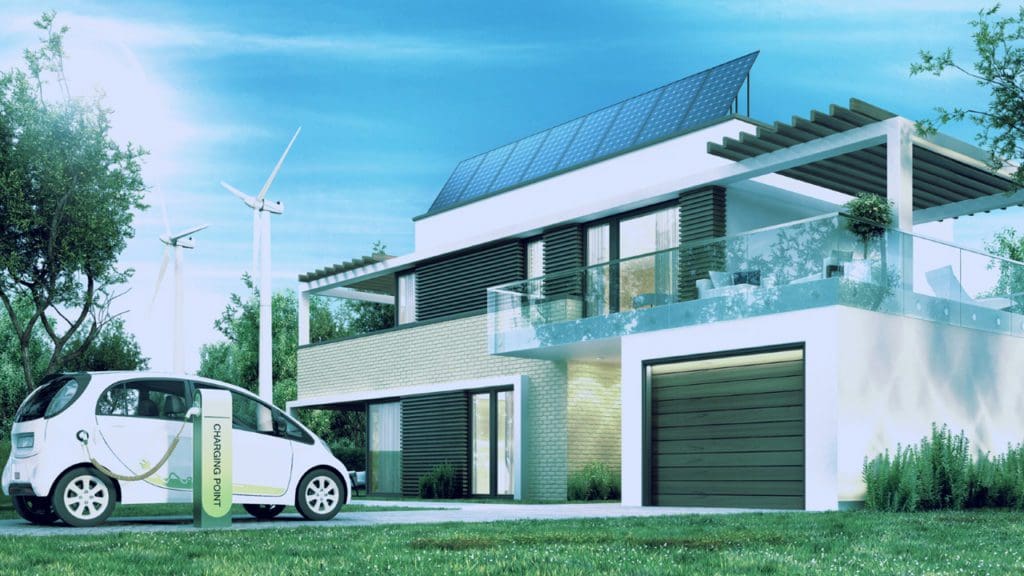Connectivity and telecommunications technologies have become defining features of the modern world, and network traffic continues its strong growth due to more connected devices, more users, more transactions per user, richer content, and many new applications. Here are six major trends to watch in this area in 2025.
Faster wireless connectivity driven by the development of 6G technology, further improvements to IEEE 802.11™ Wi-Fi, and rapid expansion of ultra-high-speed broadband technologies such as Fiber-to-the-Home (FTTH) is expected to catalyze many developments, including deeper and more immersive user experiences, efforts to build more computing power into our devices, finding ways to open internet access to rural and underserved populations, and the possibility for a more sustainable communications infrastructure.
The use of increasingly sophisticated artificial intelligence and machine learning (AI/ML) technologies will lead to faster, more flexible and more efficient ways to work with data, including agentic AI and to shape the Wi-Fi user experience. Also, the need to address growing cybersecurity threats is growing and has never been more urgent.
Deeper, Richer User Experiences
6G technology has already demonstrated the ability in tests to transmit data at rates up to ~1 Tb/sec, versus 5G’s 1 Gb/sec. top speed. This huge increase in potential data speed has the potential to create compelling new use cases.
6G technology could enable new applications and ways of doing things. It has the potential to provide users with much richer experiences and service providers with new business opportunities. For example, holographic telepresence is the term for when a network transports lifelike holograms of remote people and objects, along with audio. 6G could enable these digital twins and the related audio to be projected across a 6G network in real-time, making it seem as though the people or objects are physically present nearby, so that we can interact with them as if they really were.
Such 6G-enabled experiences could create opportunities to help change the world for the benefit of humanity. For example, lifelike holograms could be used to guide a surgeon through an especially challenging operation, even if the supervising surgeon who is providing guidance is located thousands of miles away.
6G can also create new virtual opportunities in e-commerce, events, and many other areas and facilitate the use of AI in networked applications.
Additionally, the rapid expansion of ultra-high-speed broadband technologies such as FTTH can enable reliable multi-gigabit speeds to homes and businesses. Wi-Fi plays an increasingly critical role in extending these benefits throughout the home or office, ensuring seamless, high-speed connectivity throughout the premises and enabling a wide range of smart devices and applications. To prevent Wi-Fi from becoming a bottleneck in the end-to-end user experience, service providers can adopt the latest standards, such as IEEE 802.11be™ (also known as Wi-Fi 7), which improve throughput and latency. IEEE 802.11be also supports connectivity using 6GHz license-exempt spectrum, which enables higher speeds in high-density environments.
More Powerful Devices are Needed
With higher data rates, however, comes the need for more computing power in our devices to handle the data flows. Existing devices have only a limited ability to provide these types of experiences and to work with AI technologies. More powerful processors, faster and larger memories, improvements in RF components, and stronger, longer-lasting batteries are needed, along with effective ways to keep these devices from overheating.
IEEE Standards Association (IEEE SA) has numerous standards-related initiatives and activities underway to understand and define these requirements within the 6G Technology for Connectivity & Telecom Systems Industry Connections program. IEEE SA’s Industry Connections programs are collaborative frameworks where interested stakeholders come together and refine their thinking on rapidly changing technologies.
Expanding Connectivity to More People
Despite the fact that the world is more interconnected than it was just a few short years ago, 32 percent of the world’s population still doesn’t have internet access, according to the ITU. This is often because telephone companies and network operators don’t see an adequate return on investment for building a traditional network in remote and/or sparsely populated rural areas.
However, internet connectivity would provide these populations with more options to achieve economic self-sufficiency, among other benefits. 6G technology might be one way to help bridge this digital divide, and so IEEE SA has formed the 6G Rural Connectivity and Intelligent Village Industry Connections program. Its goal is to investigate, understand, and define the challenges, opportunities, and potential solutions that may help provide sustainable, reliable, and affordable connectivity to underserved areas.
Sustainable Infrastructure is a Key Goal
The United Nations has stated that access to the internet is a basic human right, and one of the sustainable development goals in its 2030 Agenda for Sustainable Development is that universal and affordable access to the internet be available everywhere.
IEEE SA launched an initiative called IEEE Planet Positive 2030, a collaborative, multidisciplinary effort to develop pragmatic, sustainable technology solutions to lessen humanity’s impact on the planet. It builds on IEEE’s experience in identifying and judging the potential positive and negative impacts of how technologies are applied. It is part of the IEEE’s overall Sustainable Infrastructures and Community Development program, which brings together multidisciplinary teams to identify sustainable and practical technology solutions.
AI for Better, Faster, More Efficient Data Processing
AI approaches are likely to be used for virtually all functions within connectivity and telecom systems to achieve greater efficiencies, speed and reduced costs. But it is unclear how AI will impact their data processing architectures.
For example, where will the data processing actually happen? Will it be primarily at centralized data centers, or will AI processing be more of a distributed function on the client (device) side as well?
Until now, virtually all AI processing has been done at data centers, which hold vast amounts of information. There are many advantages to centralized AI processing, but there are also disadvantages. Having to transmit data back-and-forth can become a bottleneck, and if a hacker breaks into the centralized location, valuable information might be stolen or corrupted. Distributed processing reduces these risks, but can it actually be done effectively, and does it provide more points of entry for malicious actors?
Each approach will make use of AI functionality in different ways. Data centers will use AI to learn, anticipate, and direct the behavior of devices and networks, while edge-connected devices will use it locally for real-time processing and inferencing.
Agentic design AI stands to have a role in the future of connectivity and telecommunications as well. It is a software system combining automation with large language model (LLM) capabilities to create AI agents that can perform tasks independently, including the ability to adapt in real-time and solve complex problems based on context.
Finally, AI is also beginning to have a growing influence in shaping the user experience for IEEE 802.11™ Wi-Fi, substantially broadening the array of use cases and consumer applications. This is largely driven by the advancement of AI capabilities in edge devices, especially mobile devices, access points, and home gateways.
This trend can be seen in two key application areas:
- AI for Network Optimization and Enhanced User Experience
- By leveraging AI, we anticipate more efficient traffic prioritization and management, plus proactive network troubleshooting, enabling a superior user experience
- Edge AI Applications
- AI capabilities at the edge, enabled by advancements in mobile devices and home gateways, can unlock new use cases, combining edge and cloud computing to deliver low-latency, private, seamless, and personalized AI-powered applications for smart homes and enterprises.
Cybersecurity: A Critical Requirement
Another major trend is that cybersecurity is becoming increasingly important across all of the functions and use cases for connectivity and telecom systems.
Most of our identity is already on the internet, and as things progress, this may come to include not only written information but also our holographic images, voice, etc. Unless and until better cybersecurity measures are developed and put in place to ensure that our data won’t be hacked by third-party vendors or misused, people will not trust these systems.
Cybersecurity with regard to data processing will be a critical part of the IEEE Connectivity and Telecom practice in 2025, with initiatives such as the Cybersecurity for Next Generation Connectivity Systems Industry Connection program. Its goal is to build a community to discuss cybersecurity issues and rethink architectures to address critical market needs.
Cybersecurity is likely to remain a major trend going forward, because as malicious actors get better at what they do, cybersecurity technology must stay a few steps ahead.
Get Engaged with IEEE SA
The worldwide growth of wireless connectivity and the opportunities and challenges it brings mean that close collaboration is essential among network operators and providers of equipment, services and IP.
IEEE SA is building a community of interested stakeholders from across the globe to address the need for robust, responsible, and affordable communications platforms. We work across industries and sectors to drive worldwide participation and to champion the benefits of open standards and solutions, accelerating their adoption and the advancement of technology.
Participants in IEEE SA’s standards-related activities not only have the opportunity to shape the future of their industry, they also have many options to advance their careers through active learning and by working with like-minded individuals from industry, academia and government.










Excited to see how connectivity trends are evolving! The shift towards 5G and IoT integration is particularly interesting. Looking forward to more insights on how these will impact the telecommunications landscape.